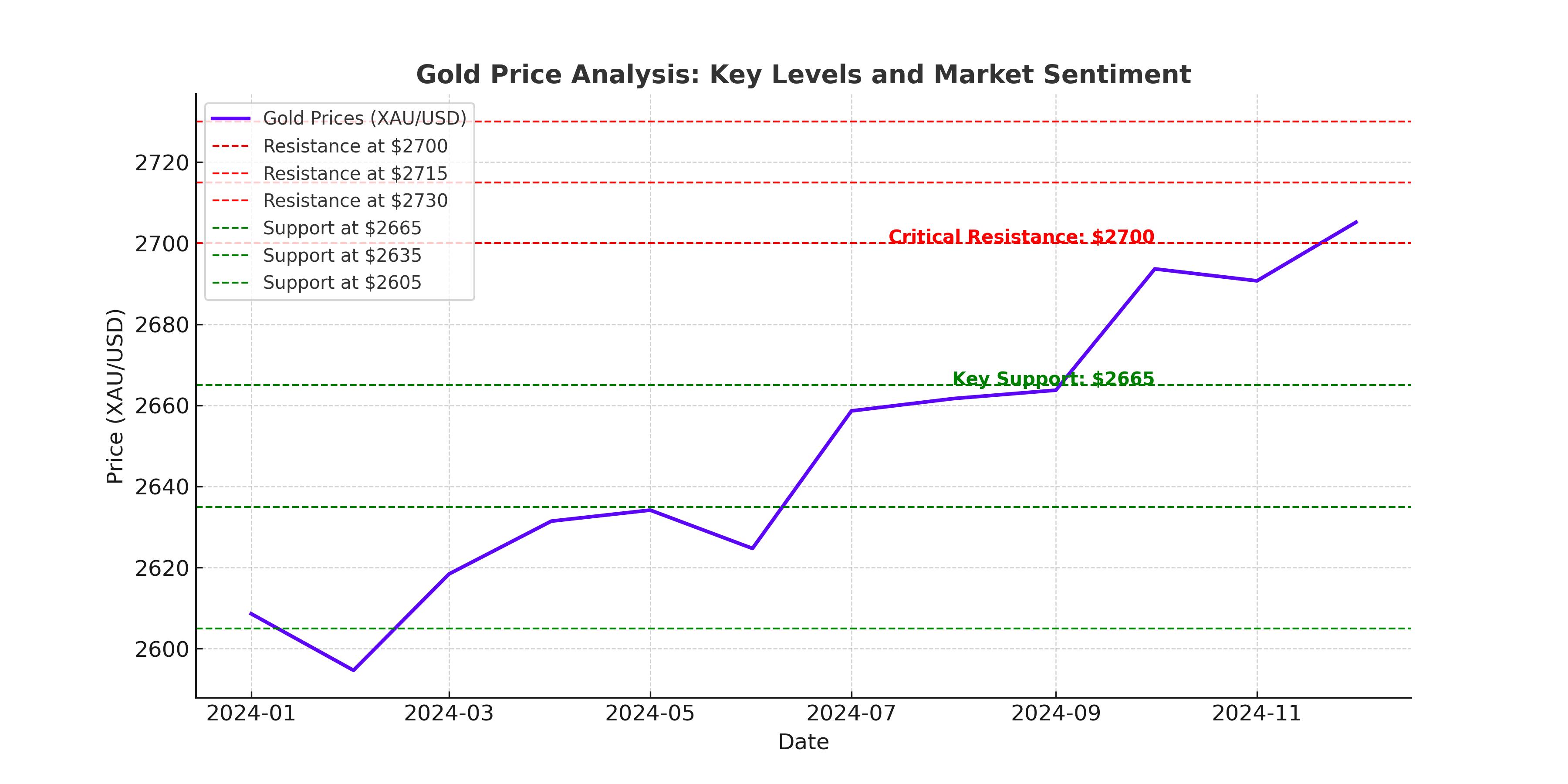
Can Gold (XAU/USD) Hold Above $2,700 Amid Surging Yields?
Gold struggles near $2,700 as rising U.S. yields and a strong dollar challenge its rally. Will safe-haven demand and inflation fears support the metal? | That's TradingNEWS
1/13/2025 11:26:51 PM
Gold Price Analysis: XAU/USD Approaches Key Psychological Resistance
Gold (XAU/USD) remains a focal point for investors as prices hover near the critical psychological barrier of $2,700 per ounce. Currently trading at $2,678.09, the yellow metal has retreated from its December highs of $2,693.40 amid strong headwinds from rising U.S. Treasury yields and a surging U.S. Dollar. Market participants are now weighing the impact of robust U.S. labor data, heightened geopolitical tensions, and Federal Reserve policies on the near-term trajectory of gold prices.

Read More
-
AMD Stock Price Forecast - AMD Shares Gains on $9.2B Q3 Surge
27.11.2025 · TradingNEWS ArchiveStocks
-
Bitcoin (BTC-USD) ETF Inflows Rebound to $21.12M as BTC Surges Past $91K and Institutional Buyers Return
27.11.2025 · TradingNEWS ArchiveCrypto
-
Natural Gas Price (NG=F) Rises Toward $4.60 as Cold Weather and Record LNG Exports
27.11.2025 · TradingNEWS ArchiveCommodities
-
Stock Market Today - Dow 47,427 and Nasdaq 23,214 — Fed Cut Bets Power DELL, HOOD, and URBN in Holiday Rally
27.11.2025 · TradingNEWS ArchiveMarkets
-
USD/JPY Price Forecast - (Dollar–Yen) Steadies at 156.30 as Japan’s ¥21.3 Trillion Stimulus
27.11.2025 · TradingNEWS ArchiveForex



















